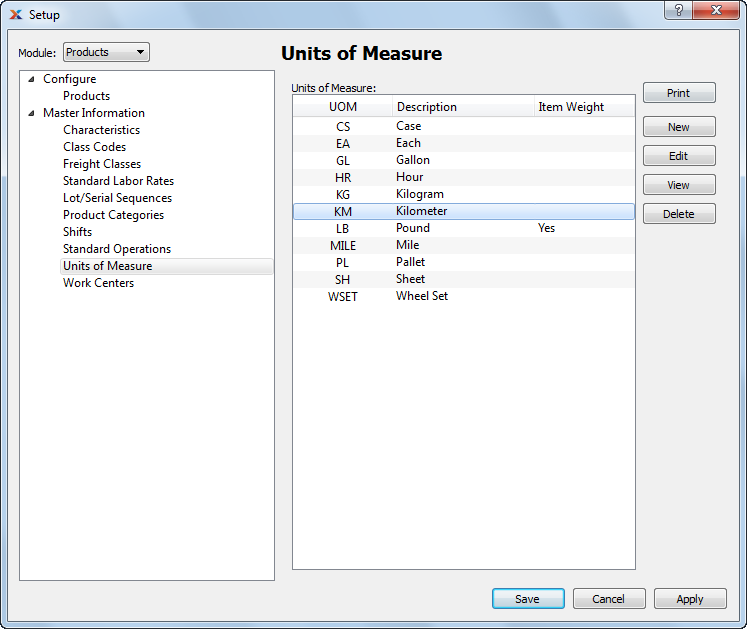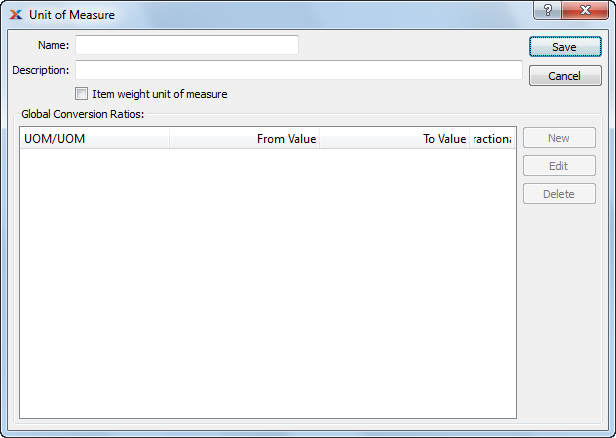
|
xTuple ERP Reference Guide |
Units of Measure represent the standard amount in which quantities of an Item are managed (e.g., "EACH," "POUNDS," "GALLONS," etc.). To access the master list of Units of Measure, select the "Units of Measure" option. The following screen will appear.

The "Units of Measure" screen displays information on all existing Units of Measure, including Unit of Measure name and description.
Users may also enter free-form UOMs wherever UOM definitions are required—for example, in the Item master. The ability to enter free-form UOMs provides flexibility so that all the UOMs your site requires do not need to be previously added to the UOM master list.
To create a new Unit of Measure, select the NEW button. The following screen will appear:

When creating a new Unit of Measure, you are presented with the following options:
Enter a unique name for the Unit of Measure.
Enter a description to further identify the Unit of Measure.
Display lists already-defined conversion ratios for the specified Unit of Measure.
Select this check box if the Unit of Measure represents the default Item weight.
Global conversion ratios enable you to create basic conversions such as inches to feet, pounds to ounces, etc. Once defined here, these conversions may be used throughout the system. The master list of global conversion ratios should include conversions both from and to the specified Unit of Measure (UOM). That is to say, if the conversion from ounces to pounds is defined in the maintenance for pounds, the calculated conversion from pounds to ounces should also appear in the ounces maintenance. Users can add, edit and delete from the list of conversions. However, users should be discouraged from editing or changing a conversion ratio that is being or has been used in a transaction.
To create a new global conversion ratio, select the NEW button. The following screen will appear:

As their name implies, global conversion ratios may be used throughout the system once they are defined in the UOM Master Information.
When creating a new global conversion ratio, you are presented with the following options:
Select a source UOM from the list of defined UOMs.
Enter a value for the source UOM to be used in the conversion ratio.
Select a per UOM from the list of defined UOMs.
Enter a value for the per UOM to be used in the conversion ratio.
Specify whether Inventory processed using this alternate UOM may be maintained in fractional quantities. If not selected, Inventory using this global conversion ratio may not be maintained in fractional quantities.